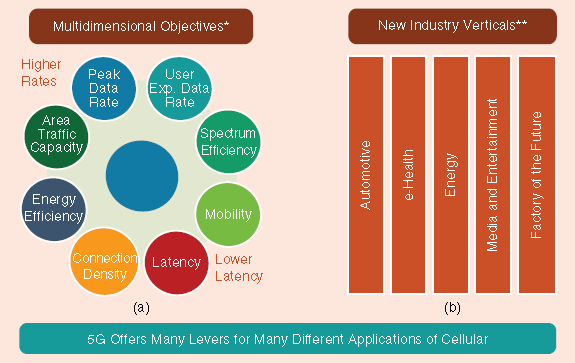- Our Story
- Publications & Resources
- Publications & Resources
- Publications
- IEEE Signal Processing Magazine
- IEEE Journal of Selected Topics in Signal Processing
- IEEE Signal Processing Letters
- IEEE Transactions on Computational Imaging
- IEEE Transactions on Image Processing
- IEEE Transactions on Information Forensics and Security
- IEEE Transactions on Multimedia
- IEEE Transactions on Signal and Information Processing over Networks
- IEEE Transactions on Signal Processing
- IEEE TCI
- IEEE TSIPN
- Data & Challenges
- Submit Manuscript
- Guidelines
- Information for Authors
- Special Issue Deadlines
- Overview Articles
- Top Accessed Articles
- SPS Newsletter
- SigPort
- SPS Resource Center
- Publications FAQ
- Blog
- News
- Dataset Papers
- Conferences & Events
- Community & Involvement
- Professional Development
- For Volunteers
- Information for Authors-OJSP
-
Home
Conferences Events IEEE Signal Processing Magazine IEEE SPL Article IEEE TIFS Article IEEE TMM Article IEEE TSP Article Jobs in Signal Processing Lectures Machine Learning Seasonal Schools Signal Processing News SPM Article SPS Distinguished Lectures SPS Newsletter Article SPS Webinar SPS Webinars SPS Webinar Series Webinar webinars
-
Our Story
What is Signal Processing?

The technology we use, and even rely on, in our everyday lives –computers, radios, video, cell phones – is enabled by signal processing. Learn More » -
Publications & Resources
-
SPS Resources
- Signal Processing Magazine The premier publication of the society.
- SPS Newsletter Monthly updates in Signal Processing
- SPS Resource Center Online library of tutorials, lectures, and presentations.
- SigPort Online repository for reports, papers, and more.
- SPS Feed The latest news, events, and more from the world of Signal Processing.
-
SPS Resources
-
Conferences & Events
-
Community & Involvement
-
Membership
- Join SPS The IEEE Signal Processing Magazine, Conference, Discounts, Awards, Collaborations, and more!
- Chapter Locator Find your local chapter and connect with fellow industry professionals, academics and students
- Women in Signal Processing Networking and engagement opportunities for women across signal processing disciplines
- Students Scholarships, conference discounts, travel grants, SP Cup, VIP Cup, 5-MICC
- Young Professionals Career development opportunities, networking
- Get Involved
-
Technical Committees
- Applied Signal Processing Systems
- Audio and Acoustic Signal Processing
- Bio Imaging and Signal Processing
- Computational Imaging
- Image Video and Multidimensional Signal Processing
- Information Forensics and Security
- Machine Learning for Signal Processing
- Multimedia Signal Processing
- Sensor Array and Multichannel
- Signal Processing for Communication and Networking
- Signal Processing Theory and Methods
- Speech and Language Processing
- Technical Working Groups
- More TC Resources
-
Membership
-
Professional Development
-
Professional Development
- Signal Processing Mentorship Academy (SigMA) Program
- Micro Mentoring Experience Program (MiME)
- Distinguished Lecturer Program
- Distinguished Lecturers
- Distinguished Lecturer Nominations
- Past Lecturers
- Distinguished Industry Speaker Program
- Distinguished Industry Speakers
- Distinguished Industry Speaker Nominations
- Industry Resources
- IEEE Training Materials
- Jobs in Signal Processing: IEEE Job Site
-
Career Resources
- SPS Education Program Educational content in signal processing and related fields.
- Distinguished Lecturer Program Chapters have access to educators and authors in the fields of Signal Processing
- Job Opportunities Signal Processing and Technical Committee specific job opportunities
- Job Submission Form Employers may submit opportunities in the area of Signal Processing.
-
Professional Development
-
For Volunteers
-
For Board & Committee Members
- Board Agenda/Minutes* Agendas, minutes and supporting documentation for Board and Committee Members
- SPS Directory* Directory of volunteers, society and division directory for Board and Committee Members.
- Membership Development Reports* Insight into the Society’s month-over-month and year-over-year growths and declines for Board and Committee Members
-
For Board & Committee Members
Popular Pages
Today's:
- Information for Authors
- (ISBI 2026) 2026 IEEE 23rd International Symposium on Biomedical Imaging
- IEEE Signal Processing Letters
- (ASRU 2025) 2025 IEEE Automatic Speech Recognition and Understanding Workshop
- IEEE Transactions on Multimedia
- IEEE Transactions on Image Processing
- IEEE Transactions on Information Forensics and Security
- Submit a Manuscript
- Information for Authors-SPL
- (ICME 2026) 2026 IEEE International Conference on Multimedia and Expo
- IEEE Transactions on Audio, Speech and Language Processing
- IEEE Transactions on Signal Processing
- Unified EDICS
- Membership
- Inside Signal Processing Newsletter
All time:
- Information for Authors
- Submit a Manuscript
- IEEE Transactions on Image Processing
- IEEE Transactions on Information Forensics and Security
- IEEE Transactions on Multimedia
- IEEE Transactions on Audio, Speech and Language Processing
- IEEE Signal Processing Letters
- IEEE Transactions on Signal Processing
- Conferences & Events
- IEEE Journal of Selected Topics in Signal Processing
- Information for Authors-SPL
- Conference Call for Papers
- Signal Processing 101
- IEEE Signal Processing Magazine
- Guidelines
Last viewed:
- Information for Authors
- (ICASSP 2028) 2028 IEEE International Conference on Acoustics, Speech, and Signal Processing
- IEEE Transactions on Audio, Speech and Language Processing
- About TASLPRO
- Unified EDICS
- IEEE Transactions on Multimedia
- Call for Nominations: 2016 Distinguished Lecturers
- (ISBI 2026) 2026 IEEE 23rd International Symposium on Biomedical Imaging
- Editorial Board
- Editorial Board
- IEEE Transactions on Signal Processing
- (ICASSP 2026) 2026 IEEE International Conference on Acoustics, Speech, and Signal Processing
- Signal Processing Conferences
- Jobs in Signal Processing
- Editorial Board
Newsletter Menu
Newsletter Categories
Top Reasons to Join SPS Today!
1. IEEE Signal Processing Magazine
2. Signal Processing Digital Library*
3. Inside Signal Processing Newsletter
4. SPS Resource Center
5. Career advancement & recognition
6. Discounts on conferences and publications
7. Professional networking
8. Communities for students, young professionals, and women
9. Volunteer opportunities
10. Coming soon! PDH/CEU credits
Click here to learn more.
News and Resources for Members of the IEEE Signal Processing Society
Going Toward 6G

The cellular industry has just reached another milestone with the development of 5G wireless communication technology. While research in 5G is a core part of the Signal Processing for Communications and Networking (SPCOM) technical committee, it may also be found in several other technical areas. As this is also my core expertise, I have decided to discuss, in this editorial, the expected goals that 5G has and has not achieved and what might be coming in 6G cellular networks.
Cellular communication systems are constantly evolving, with new releases every one to two years. Roughly every 10 years, one of the releases is branded as a new generation. Usually, the new generation standard has been designed to achieve some significant performance improvements. Many different industries have made use of cellular communication in the past, but 5G also considered the requirements of devices associated to the different verticals. From an automobile to a smart meter or an industrial robot. A main motivation for looking at applications of cellular beyond wireless Internet access is alternative revenue sources. To meet the different requirements for new devices, changes are made in all aspects of the cellular system, including the physical layer waveforms and the higher layer networking.
In the editorial Going Toward 6G by Robert W. Heath published in IEEE Signal Processing Magazine in May 2019, describe three promising directions for 6G, building on observations about limitations of 5G. First, how the physical layer needs to support higher bandwidths, higher carriers, yet at lower powers. Second, how the industry verticals from Figure 1(b) were not completely served and how 6G may be designed around these areas. Finally, the potential role that machine learning may play in 6G in a more integrated fashion than done before.
Robert W. Heath hopes that you can see the potential for signal processing in each of the areas that he has outlined. From his perspective, our work in diverse areas of signal processing have the chance for significant impact on 6G and society at large. Maybe now is the time to have a special issue of IEEE SPM on the topic of beyond 5G communications.
Open Calls
Publications News
Society News
- The SPS Resource Center: Webinars, Conference Videos, Tutorials, and more…Come for the Content; Stay for the Experience
- 46 SPS Members Elevated to Fellow
- Job Opportunities in Signal Processing
- Process Change for Member Driven Initiative Proposals
- Nominations Open for 2019 SPS Awards
- Call for Nominations: Distinguished Industry Speakers and Distinguished Lecturers
- Upcoming Distinguished Lectures
Conferences & Events
Technical Committee News
SPS Social Media
- IEEE SPS Facebook Page https://www.facebook.com/ieeeSPS
- IEEE SPS X Page https://x.com/IEEEsps
- IEEE SPS Instagram Page https://www.instagram.com/ieeesps/?hl=en
- IEEE SPS LinkedIn Page https://www.linkedin.com/company/ieeesps/
- IEEE SPS YouTube Channel https://www.youtube.com/ieeeSPS
Home | Sitemap | Contact | Accessibility | Nondiscrimination Policy | IEEE Ethics Reporting | IEEE Privacy Policy | Terms | Feedback
© Copyright 2025 IEEE - All rights reserved. Use of this website signifies your agreement to the IEEE Terms and Conditions.
A public charity, IEEE is the world's largest technical professional organization dedicated to advancing technology for the benefit of humanity.









